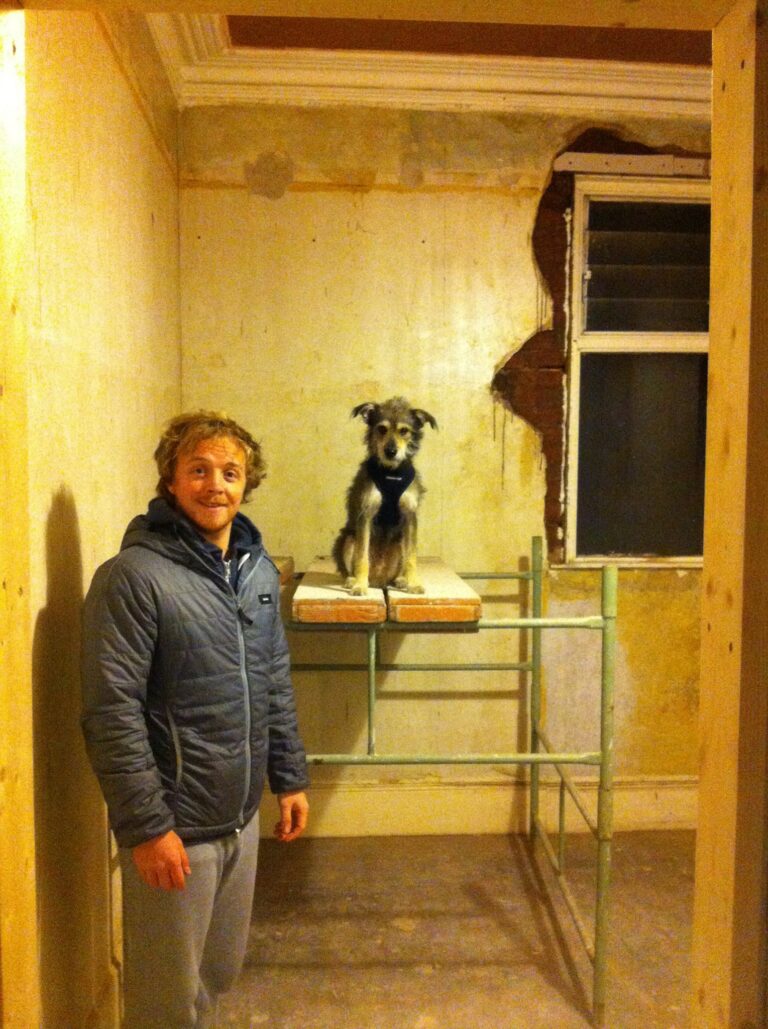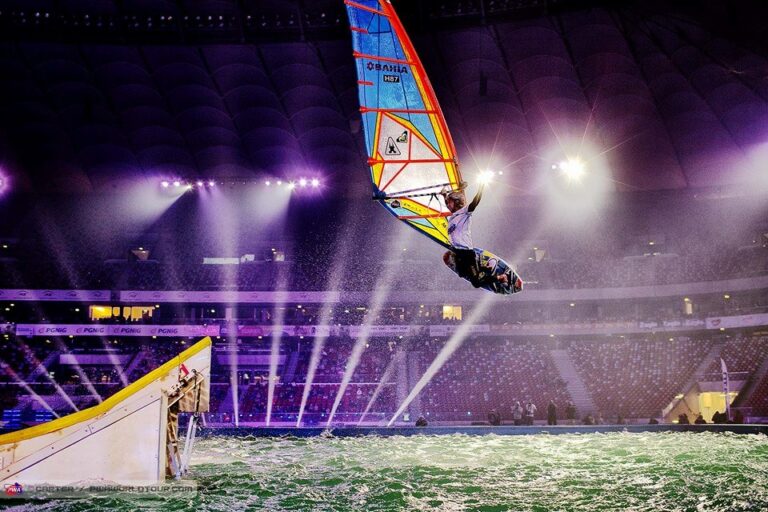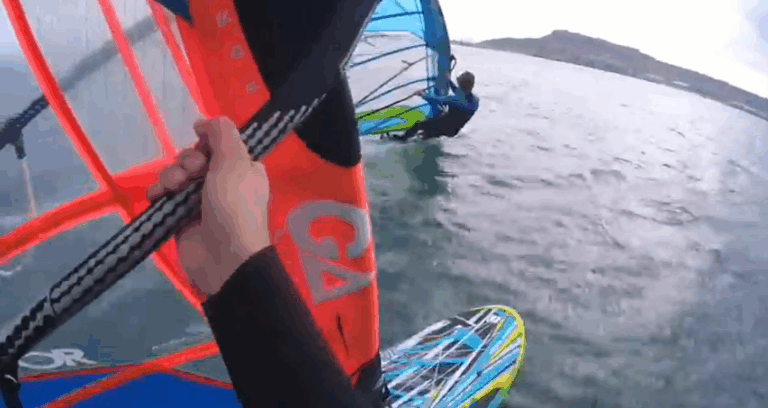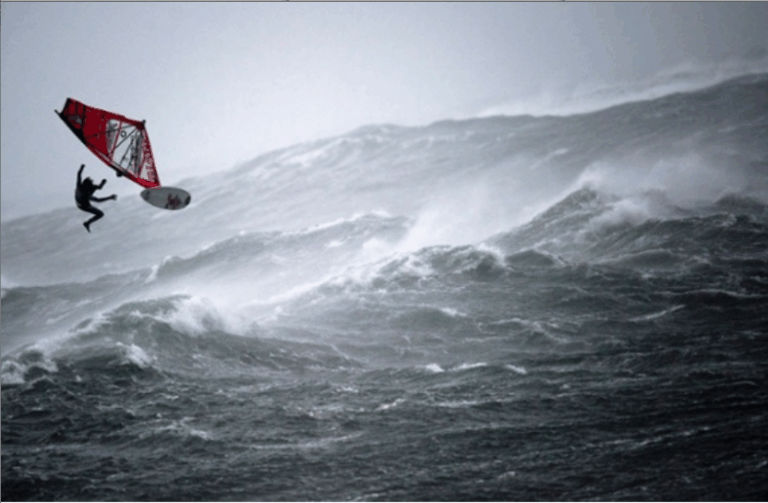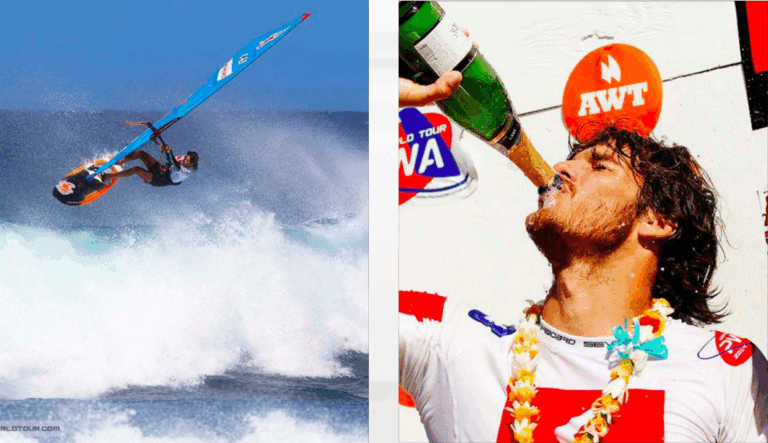Want to master the forward loop? Tonky Fran’s joins us (via the wave hobbit) to guide you through the most impressive of all windsurfing moves.

This is a discussion on the different stages of the forward loop using a sequence I shot with Tonky Frans this summer. Each rider has his own personal style but the elements are always the same.
I want to show that there is in fact no jump, no wave needed and you do not throw yourself forward in a forward loop, so taking out the 2 elements that frighten people! (So they do not give them a try.)
Scroll through the gallery for each image and graphic discussed below…
THE TAKE OFF.
It is true that the take off angle can change depending on how powered up you are, but it is more to do with the hight you wish to go and the distance you wish to travel. Most of the time the take off is slightly up wind. You do not need to jump, I call it a pop which releases the board from the water. For this you need to be centred over the centre of the board. You compress down with both legs and then spring/pop up with both legs, moving the rig over towards the wind. At this stage there is very little power in the rig! You can see that the movement of the rig towards the wind makes the board drift away from the wind. Both legs are coming up under your butt. You will also notice that the rig is not going forward but over to the side of the board and you have not engaged the power yet. Once the board is about 45 degrees down wind, is when you engage the power. At this point some people slide the back hand further down the boom but Tonky tends to keep his hands in the same position. (It depends on how he feels.)
The first thing to notice is your back foot is right up under your butt so you are over the tail of the board. Your body does not go forward over the front of the board! Due to the rig being over the side of the board your front arm is extended, so engaging the power is just keeping the back hand right close to your body. Extending your front leg as the power comes on helps to speed up the rotation.This is the most important stage of the forward, get this right and the rest is automatic.
The board rotates around and begins to climb. You hold the position of No. 2, keeping tucked up with the boom close to you. You will see that you are staying under the rig and at the back of the board.
(This is an interesting graphic as the photo on it’s own, you can not tell if it is a back loop or forward) So the first thing to notice is that you are at the top of the jump and you have done 3/4 rotation. You have not changed position from the engagement in No. 2. The main thing to do here is look back over your shoulder to spot your landing, check your rotation speed and your height.
When your rotation is perfect in No. 4 you will stay in the position until landing. In this graphic Tonky is slowing the rotation down by opening the sail and bringing the mast to the centre of the board. When the rotation is not enough it is normally because you have opened the sail during rotation and end up in this position, so you will have to bring the rig back into the position in No.1 before landing.
If you are using No 5 to slow the rotation down, you will land on the tail and the board will pivot around to the optimum landing angle. When you have the perfect rotation you should be aiming to land at the optimum landing angle. When wanting a full planing forward, the further downwind you land the easer it is.
So you can see from the graphic a forward loop is in fact more than a 360 degree rotation.
On the graphic No.1,2 and 3 are placed together as they are the most important parts. Getting the movements correct gives you the rotation and it is much easier to slow the rotation down, than to try and gain more power after No.4 to complete the forward.
Keeping in the position of No.3 and 4, you are always under the sail and only coming upright for the landing, so if you were to over rotate there is ZERO problem as you will just land softly onto your back. This also eliminates another fear you may have with the forward.
Going back to the take off. Taking off at this angle is the only way you can climb to get more hight. If you take off further down wind you will only get the hight you get from the wave. The further down wind you take off, the lower you jump but you will travel much further, so for a double it tends to be a down wind take off.
If you are climbing towards the wind you have to remember to let the drift happen! If not your mast will go to far forwards and the rotation will become more vertical.
Just to finish, there is an interesting coincidence. If I were to show No. 3,4 and 5 with out numbers, could you tell me which jump it is?
This sequence actually comes from the Bonka but I liked the fact he uses No. 5 to stop his rotation. Showing do not be frightened to commit at the beginning.

